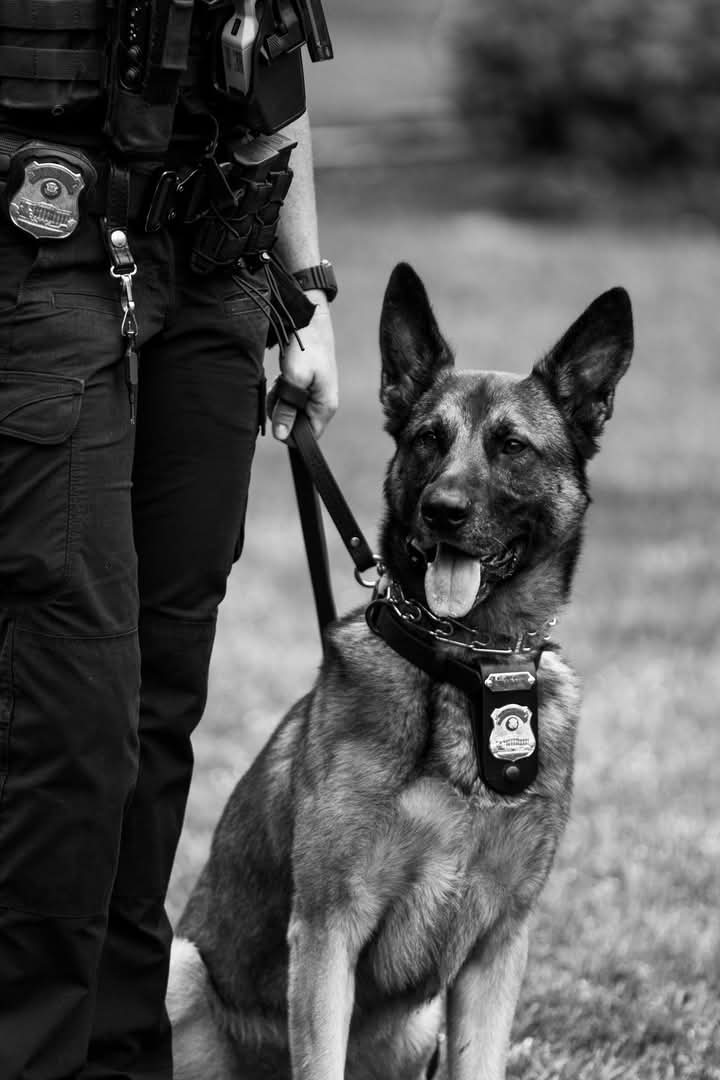Weather Predictors: Why Animals Know When Storms Are Coming Hours Before Meteorologists
While meteorologists rely on sophisticated radar systems, satellite imagery, and complex computer models to predict natural disasters, there’s an ancient early warning system that has been operating successfully for millions of years. Animals around the world consistently demonstrate an uncanny ability to sense approaching earthquakes, tsunamis, storms, and other natural disasters long before our most advanced technology detects the first signs of danger.
This phenomenon has been documented throughout human history, from ancient Greek historians recording mass animal evacuations before catastrophic earthquakes to modern pet owners noticing their dogs’ inexplicable anxiety before storms that weather services haven’t yet predicted. The question isn’t whether animals can sense impending disasters, but rather how they do it and why we haven’t learned to harness this remarkable ability more effectively.
The Ancient Warning System
The historical record of animals predicting disasters stretches back over two millennia. In 373 B.C., historians recorded that animals, including rats, snakes and weasels, deserted the Greek city of Helice in droves just days before a quake devastated the place. Accounts of similar animal anticipation of earthquakes have surfaced across the centuries since.
This wasn’t an isolated incident. Rats, weasels, snakes, and centipedes reportedly left their homes and headed for safety several days before a destructive earthquake. Anecdotal evidence abounds of animals, fish, birds, reptiles, and insects exhibiting strange behavior anywhere from weeks to seconds before an earthquake.
What makes these historical accounts particularly compelling is their consistency across different cultures, time periods, and geographic locations. From ancient China to medieval Europe to modern-day California, the same patterns of animal behavior emerge before natural disasters, suggesting this is a genuine biological phenomenon rather than folklore or coincidence.
The Science Behind the Sixth Sense
Many animals have 6th senses detecting minute changes in magnetic fields, gravity fluctuation, atmospheric pressures, air ionization, vibrations and so forth, so they feel an abnormality happening but do not necessarily know what event is happening.
Scientists have proposed several theories to explain animals’ apparent ability to predict natural disasters. One hypothesis suggests that animals can detect subtle changes in the Earth’s magnetic field that precede seismic events. Another theory focuses on animals’ capacity to sense low-frequency sound waves and vibrations that travel faster than the destructive seismic waves we feel during earthquakes.
Animals may detect low-frequency vibrations or microseismic activity that precede earthquakes. Dogs, for example, have been observed barking or pacing before tremors that humans cannot yet feel. This sensitivity to vibrations extends beyond just earthquakes. The low vibrations created by such an earthquake sometimes cannot be detected by humans, whereas larger animals like elephants can sense the vibrations earlier.
The biological mechanisms behind these abilities are fascinating and complex. Animals possess sensory capabilities that far exceed human perception in many areas. Dogs can hear frequencies up to 65,000 Hz compared to humans’ 20,000 Hz limit. Many animals can detect electromagnetic field changes, atmospheric pressure variations, and chemical signatures in the air that remain completely invisible to human senses.
Modern Scientific Validation
Recent technological advances have allowed scientists to study animal disaster prediction more rigorously than ever before. The analyses show that the amphibians were already behaving unusually five days before the earthquake and had ceased their spawning activity. Evidence is mounting, therefore, that animals perceive impending disasters earlier than humans with their measuring equipment.
One of the most impressive modern studies tracked farm animals in Italy using GPS collars and accelerometers. The animals anticipated eight out of nine earthquakes with magnitudes higher than 4.0 that occurred between January and April 2017. However, the anticipatory behavior was only seen when the animals were housed in a stable, and not when they were free to roam on pastures.
This research suggests that animal disaster prediction isn’t just folklore, but a measurable biological phenomenon. The fact that confined animals showed more consistent predictive behavior than free-roaming ones indicates that stress or environmental constraints might actually enhance animals’ sensitivity to subtle environmental changes.
For centuries, people have described unusual animal behavior just ahead of seismic events: dogs barking incessantly, cows halting their milk, toads leaping from ponds. A few researchers have tried to substantiate a link. In a 2013 study, Germany scientists videotaped red wood ants that nested near fault lines and found that the ants altered their normal behavior patterns before seismic events.
The Most Famous Success Story
The most dramatic example of animals successfully predicting a major disaster occurred in China in 1975. Chinese authorities considered 58 species of animals to be useful for earthquake prediction, especially snakes, rodents and bats, and distributed booklets with depictions and descriptions of unusual animal behaviour worth to be reported. In February 1975 hibernating snakes abandoned their hideouts in the north-eastern city of Haicheng. The city was evacuated and February 4, the region was hit by a 7.3 magnitude earthquake. More than 1.000 people were killed, but considering the massive scale of the earthquake, the death toll could have been catastrophically higher without the animal-based early warning.
This success story demonstrates the potential life-saving value of taking animal behavior seriously as a disaster prediction tool. However, it’s important to note that subsequent attempts to replicate this success in China were less successful, highlighting the complexity and unpredictability of using animals as early warning systems.
The California Connection
One geologist says he sees an increasing number of missing pets documented in the local classified ads just before an earthquake strikes in California. He, in fact, predicted the famous San Francisco earthquake of 1989. This observation suggests that pets may flee areas before earthquakes strike, possibly sensing danger that humans cannot detect.
The theory is that the animals are fleeing the impending quake. Again, other scientists remain skeptical, pointing out that correlation doesn’t necessarily prove causation. Animals change their behavior for many reasons and given that an earthquake can shake millions of people, it is likely that a few of their pets will, by chance, be acting strangely before an earthquake.
This skepticism highlights one of the major challenges in studying animal disaster prediction: separating genuine predictive behavior from normal behavioral variation and coincidence.
Beyond Earthquakes: Tsunami Warning Systems
The 2004 Indian Ocean tsunami provided dramatic real-world evidence of animals’ disaster prediction abilities across multiple species and environments. In my recent book The Sense of Being Stared At, I summarize a large body of evidence for unusual animal behaviour before earthquakes, including recent earthquakes in California, the 1995 Kobe earthquake in Japan and the 1997 earthquake in Assisi, Italy. In all cases there were many reports of unusual animal behavior preceding the disasters.
During the tsunami, elephants were observed trumpeting and heading for higher ground, dogs refused to go on their usual beach walks, and zoo animals showed signs of extreme agitation hours before the waves struck. These behaviors saved countless animal lives and, in some cases, alerted humans to flee to safety as well.
The consistency of these reports across such a wide geographic area and diverse range of species suggests that animals were responding to genuine environmental cues rather than random behavioral changes.
The Evolutionary Advantage
All animals instinctively respond to escape from predators and to preserve their lives. A wide variety of vertebrates already express “early warning” behaviors that we understand for other types of events, so it’s possible that a seismic-escape response could have evolved from this fundamental survival instinct.
From an evolutionary perspective, the ability to detect and respond to environmental threats before they become life-threatening would provide enormous survival advantages. Animals that could sense approaching storms, floods, earthquakes, or volcanic eruptions would be more likely to survive and reproduce, passing these sensitivities on to their offspring.
This evolutionary pressure has likely refined animal disaster detection abilities over millions of years, creating the sophisticated early warning systems we observe today. While humans have developed technology to replace many of our natural survival instincts, animals have retained and refined these abilities.
The Limitations and Skepticism
Despite compelling evidence, the scientific community remains divided on animal disaster prediction. No. Neither the USGS nor any other scientists have ever predicted a major earthquake. We do not know how, and we do not expect to know how any time in the foreseeable future. This official position reflects the challenge of turning animal behavioral observations into reliable, actionable disaster predictions.
For the most part, animals cannot predict disasters. Since disasters can strike at any time, it’s important for us to prepare ourselves—and animals—for earthquakes, tsunamis, fires, and severe weather events. This perspective emphasizes that while animal behavior may provide interesting clues, it shouldn’t replace conventional disaster preparedness and scientific monitoring systems.
The main limitations of animal-based disaster prediction include the difficulty in distinguishing disaster-related behavior from normal behavioral variation, the challenge of creating standardized monitoring systems, and the lack of specificity in timing and magnitude predictions.
Pet Owner Observations
For pet owners, understanding their animals’ disaster prediction abilities can provide valuable early warning signs, even if these observations aren’t scientifically reliable enough for official disaster prediction systems. Dogs may pace, whine, or refuse to enter certain areas before earthquakes. Cats might hide or show unusual aggression. Birds may become agitated or change their vocalizations.
While these behaviors shouldn’t be the sole basis for disaster preparedness decisions, they can serve as additional data points for pet owners who live in disaster-prone areas. Paying attention to multiple pets displaying similar unusual behaviors simultaneously may be particularly significant.
The key is learning to distinguish between normal behavioral variations and genuinely unusual patterns that might indicate environmental changes. This requires pet owners to develop a good understanding of their animals’ normal behavior patterns and stress responses.
The Technology Integration Future
Modern technology is beginning to bridge the gap between animal observations and scientific disaster prediction. Researchers are developing networks of sensors that monitor animal behavior continuously, looking for patterns that might indicate approaching disasters.
GPS tracking, accelerometers, and other monitoring devices can provide objective data about animal movement and behavior patterns, potentially making animal disaster prediction more scientifically rigorous. These technologies could help identify the specific behaviors that correlate most strongly with approaching disasters and filter out false alarms caused by other environmental factors.
The integration of animal behavioral data with traditional seismic, meteorological, and geological monitoring could create more comprehensive early warning systems that combine the sensitivity of biological sensors with the precision of technological instruments.
The Global Perspective
Different cultures around the world have varying levels of acceptance and integration of animal disaster prediction into their disaster preparedness strategies. While Western scientific tradition tends to be skeptical without rigorous experimental validation, many traditional societies have long incorporated animal behavior observations into their disaster preparedness practices.
This cultural divide presents both challenges and opportunities for advancing our understanding of animal disaster prediction. Traditional knowledge systems may contain valuable insights that haven’t been subjected to scientific study, while scientific methodology can help separate genuine predictive behaviors from cultural myths and coincidences.
The Path Forward
The future of animal disaster prediction likely lies in combining the best aspects of traditional observations, modern scientific methodology, and technological innovation. Rather than dismissing animal behavior as unreliable or accepting it uncritically, we need systematic approaches that can identify and validate the genuine predictive signals while filtering out false alarms.
This might involve creating standardized animal behavioral monitoring networks, developing better understanding of the biological mechanisms behind disaster prediction abilities, and integrating animal behavioral data with conventional disaster monitoring systems.
The potential benefits are enormous. If we could reliably harness animals’ disaster prediction abilities, we might be able to provide earlier warnings for earthquakes, tsunamis, volcanic eruptions, and severe weather events, potentially saving thousands of lives and reducing disaster damage.
The remarkable ability of animals to sense approaching disasters represents one of nature’s most sophisticated early warning systems. While we may not yet fully understand the mechanisms behind these abilities or know how to harness them reliably for human disaster prediction, the evidence for their existence is compelling and growing stronger with each scientific study.
Whether it’s elephants fleeing before tsunamis, dogs hiding before earthquakes, or farm animals becoming agitated before storms, these behaviors remind us that there are aspects of our natural environment that our technology hasn’t yet learned to detect. By paying attention to these biological early warning systems while continuing to develop our scientific understanding, we may eventually be able to predict disasters with a combination of animal intuition and human technology that surpasses what either could achieve alone.






